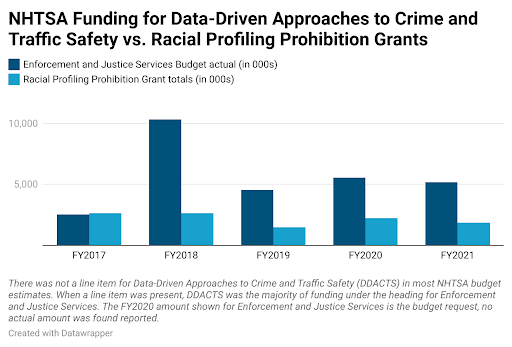DISCOVER YOUR LOCAL BICYCLING COMMUNITY
Find local advocacy groups, bike shops, instructors, clubs, classes and more!
Progress on Pretextual Policing
Earlier this year, the League of American Bicyclists joined 70 other organizations in an effort led by the Transportation Equity Caucus asking the Biden administration to end its support for using minor traffic stops as a pretext to investigate other potential crimes. Using minor traffic stops as a gateway for other investigations undermines the effectiveness of and public support for traffic law enforcement while also creating racial injustices as Black and Brown people are often more likely to be pulled over under pretext.
Our goal is safer roads. Pretextual policing – since it is not focused on traffic safety – does not necessarily improve traffic safety. As Americans face persistently high and increasing rates of traffic violence, it is now more critical than ever to ensure that we are advancing traffic safety and racial justice at the same time. We must rethink our approach to traffic safety – the status quo is not resulting in fewer traffic deaths. One way the League has approached this was in June of 2020 when we removed ‘Enforcement’ from the ‘5 E’ framework of our Bicycle Friendly America program.
It is in the context of the largest increase in traffic deaths in the history of national traffic fatality records and the first-ever National Roadway Safety Strategy that the League, and many other organizations, met with the Department of Transportation and Department of Justice shortly before Memorial Day weekend.
Our letter, and the beginning of our conversation, focused on one particular program created by the federal government in 2008 – “Data-Driven Approaches to Crime and Traffic Safety (DDACTS).” In its 2021 report, Equity in Highway Safety Enforcement and Engagement Programs, the Governors Highway Safety Association (GHSA) recommended that to advance equity there is a need to “refocus traffic enforcement efforts on traffic safety.” The DDACTS program was specifically called out for its support of focusing on traffic law enforcement in high-crime neighborhoods, with a “growing body of evidence” questioning the efficacy of the approach and that any benefits are outweighed by the high burdens imposed on Black, Brown, and lower-income communities through pretextual policing.
In the League’s 2021 report, Reconnecting to the New Majority, we found that Black, Hispanic, and Native American populations are more likely to be killed while biking compared to white Americans. Participants of a survey conducted in line with the report agreed that the most common factor in getting people to bike more often is the presence of infrastructure – in the form of bike lanes, trails, and bike parking. Notably, more than 40% of Hispanic and Black respondents, as well as those between the ages of 18 and 29, indicated that “less concern for interactions with police” would help them bike more often – a more common response for those groups than bicycle education or having people to ride with.
The traffic stop is the most common form of police-initiated interaction with the public. Research on traffic stops of people biking is limited, but research from Charles Brown, Dr. Jesus Barajas, an investigation by the Department of Justice in Tampa, and public reporting from Seattle and Los Angeles show that traffic stops of bicyclists often disproportionately impact people biking who are visibly non-white or visibly low-income. In the case of Tampa, Seattle, and Los Angeles, pretext – using the traffic stop for another purpose – seems to explain the disparities witnessed and the lack of connection between those stops and traffic safety improvements.
Our conversation did not stay on the DDACTS program, and it seems unlikely that the decade-plus old program will be ended immediately.

On the other hand, our conversation had many positive efforts to discuss, such as local advocacy organization Bike East Bay’s work to transfer some traffic enforcement duties from police to public works, or the increased funding for the Racial Profiling Prohibition Grant program authorized by Congress. There was also a lot of interest in finding ways for organizations and leaders to work together and improve traffic safety.
The perspective of the League is that the best way to improve traffic safety is to invest in safe infrastructure, social support for people who choose biking and walking, and community-based groups that support traffic safety improvements. This is particularly important in communities that have experienced a lack of investment in safe infrastructure for biking and walking, or who do not see law enforcement as improving their public safety.
Ending support for pretextual policing is a positive step forward. More information about fines, fees, automated enforcement, and how those issues impact communities and contribute to better traffic safety – or not – is needed. With more than 40,000 traffic deaths in 2021, progress is needed desperately and I am thankful for the organizations and agencies who made progress through our meeting last week.